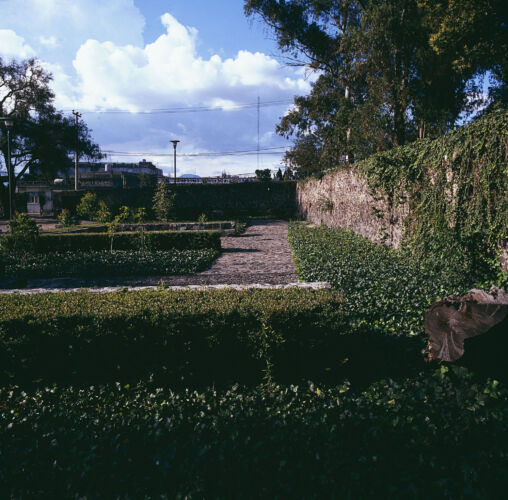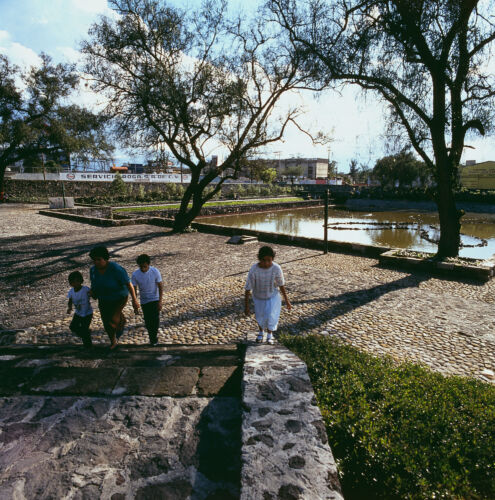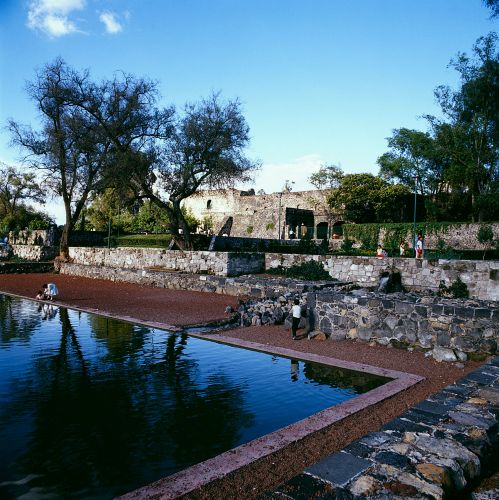In Iztapalapa, southwest of Mexico City and next to the Exconvento de San Juan Evangelista, which was built in the 16th century, is the El Tanque site, which served as a pre-Hispanic spring and dock, as boats circulated along what is now Tláhuac Avenue.
The ahuejote vegetation highlights the linear and orthogonal sense.
The direction of the Centro Comunitario Culhuacán, working alongside with the INAH, decided to adapt it and turn it into a historical-archaeological park that vividly exposed the lacustrine history of this part of Mexico City.
The rectangular composition scheme reinforces the orientation and structure of the convent. The ahuejote vegetation highlights the linear and orthogonal sense. It is a space of stone and water, a true oasis of rest. To the southeast, an open-air theater was located, which can accommodate 250 people with bleachers and a floor of braza and laja stone. In the center, the pond and dock are recreated, leaving a peripheral circulation on the sides of the archaeological wall. There is a basin with a waterfall where a gargoyle, rescued from the archaeological excavation, was used to indicate the spring. Walkways and squares combine textures of braza stone, river pebble stone, and rectangular mats of volcanic stone.






